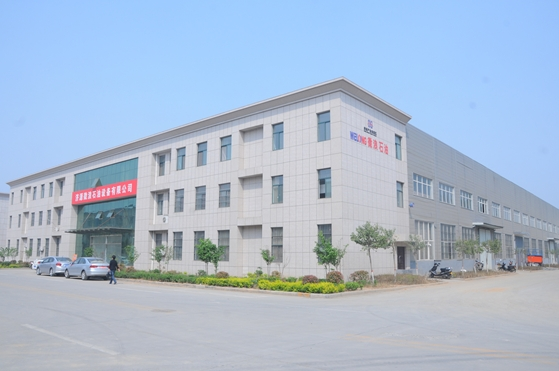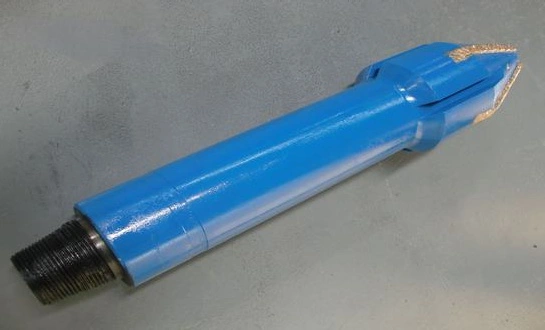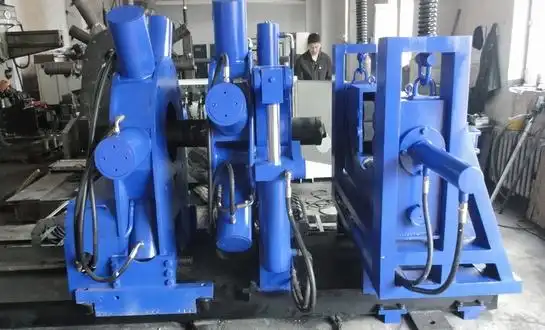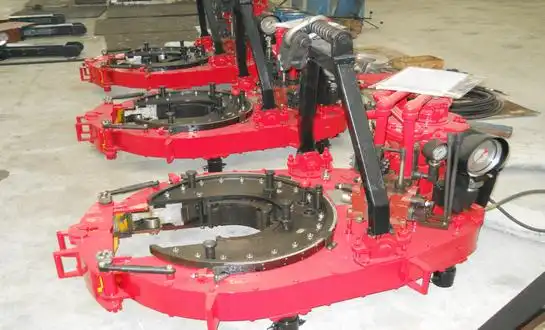What ASTM/ISO Tests Validate 42CrMo4 Shaft Quality?
Tensile Strength and Yield Point Testing
ASTM A370 and ISO 6892-1 are pivotal standards for evaluating the tensile properties of 42CrMo4 shaft forging. These tests measure the material's ability to withstand longitudinal stress, providing crucial data on its ultimate tensile strength and yield point. For 42CrMo4 shafts, typical tensile strength values range from 900 to 1100 MPa, while yield strength usually falls between 700 and 900 MPa. These parameters ensure that the forged shafts can withstand the high loads and stresses encountered in oil and gas applications.
Impact Resistance Evaluation
The Charpy V-notch impact test, governed by ASTM E23 and ISO 148-1, assesses the toughness and impact resistance of 42CrMo4 shaft forgings. This test is particularly important for components used in low-temperature environments or subjected to sudden loads. For 42CrMo4 material, impact values typically range from 40 to 60 joules at room temperature, demonstrating its resilience against brittle fracture under dynamic loading conditions.
Non-Destructive Examination Techniques
Ultrasonic testing (UT) and magnetic particle inspection (MPI) are crucial non-destructive examination methods used to detect internal and surface defects in shaft forgings. ASTM E114 and ISO 13588 guide ultrasonic testing procedures, while ASTM E709 and ISO 9934 set standards for magnetic particle inspection. These tests help identify potential flaws such as inclusions, cracks, or porosity that could compromise the shaft's integrity during operation. Implementing these rigorous testing protocols ensures that only high-quality 42CrMo4 shaft forgings make it to the field, minimizing the risk of equipment failure and downtime.
How to Ensure Chemical Composition Consistency in 42CrMo4?
Precise Raw Material Selection
The foundation of consistent chemical composition in 42CrMo4 shaft forgings begins with meticulous raw material selection. Suppliers must adhere to strict specifications outlined in standards such as ASTM A29 or ISO 683-1. These standards define the acceptable ranges for each alloying element in 42CrMo4 steel, typically including 0.38-0.45% carbon, 0.90-1.20% chromium, and 0.15-0.30% molybdenum. By sourcing high-quality raw materials that fall within these specified ranges, manufacturers can establish a solid base for consistent chemical composition throughout the forging process.
Advanced Melting and Refining Techniques
Employing state-of-the-art melting and refining techniques is crucial for maintaining chemical composition consistency in 42CrMo4 shaft forgings. Electric arc furnaces (EAF) coupled with ladle metallurgy furnaces (LMF) offer precise control over the steel's composition. The LMF process allows for fine-tuning of alloying elements and removal of impurities through techniques such as vacuum degassing. This level of control ensures that the molten steel meets the exact chemical requirements before proceeding to the forging stage, minimizing variations that could affect the final product's properties.
In-Process Chemical Analysis and Adjustments
Continuous monitoring and adjustment of the chemical composition during the forging process are essential for maintaining consistency. Optical emission spectrometry (OES) is commonly used for rapid, on-site analysis of the steel's composition. This allows for real-time adjustments to be made if any deviations are detected. Additionally, implementing statistical process control (SPC) methods helps identify trends or shifts in composition over time, enabling proactive measures to be taken before significant variations occur. By combining these analytical techniques with responsive process controls, manufacturers can ensure that every 42CrMo4 shaft forging maintains the required chemical composition, leading to consistent mechanical properties and performance.

Can Hardness Testing Prevent Premature Shaft Failures?
Correlation Between Hardness and Material Strength
Hardness testing serves as a critical indicator of a material's overall strength and durability, making it an invaluable tool in preventing premature failures of 42CrMo4 shaft forgings. The Brinell hardness test, governed by ASTM E10 and ISO 6506, is commonly used for large forged components. For 42CrMo4 shafts, typical hardness values range from 280 to 320 HBW, depending on the heat treatment applied. This hardness range correlates strongly with the material's tensile strength and wear resistance, providing a quick and non-destructive method to verify the shaft's mechanical properties. By ensuring that hardness values consistently fall within the specified range, manufacturers can significantly reduce the risk of premature failures due to inadequate material strength.
Detection of Heat Treatment Anomalies
Hardness testing plays a crucial role in identifying potential heat treatment anomalies that could lead to premature shaft failures. The quenching and tempering process for 42CrMo4 shafts is designed to achieve a specific microstructure and hardness profile. Any deviations from the intended heat treatment parameters can result in localized soft or hard spots, which may not be apparent through visual inspection or dimensional checks. By conducting systematic hardness tests across the shaft's surface and cross-section, manufacturers can detect these anomalies before the component enters service. This proactive approach allows for corrective actions, such as re-heat treatment or rejection of non-conforming parts, thereby preventing the installation of shafts prone to premature failure.
Monitoring of In-Service Degradation
Regular hardness testing of 42CrMo4 shaft forging components during service intervals can provide valuable insights into potential degradation mechanisms. Over time, shafts may experience work hardening, softening due to thermal exposure, or localized hardness changes due to wear or impact. By establishing a baseline hardness profile and conducting periodic checks, operators can track these changes and predict potential failures before they occur. For instance, a significant decrease in surface hardness might indicate excessive wear, while an unexpected increase could suggest work hardening and potential brittleness. This predictive maintenance approach, based on hardness testing, allows for timely interventions and replacements, significantly reducing the risk of catastrophic shaft failures during operation.
Source: CHINA WELONG-Oilfield tools Manufacturer
FAQ about Shaft forging
What are the key advantages of using forged shafts over machined ones?
Forged shafts offer superior strength, improved grain structure, and enhanced durability compared to machined shafts. The forging process aligns the material's grain flow with the part's geometry, resulting in better fatigue resistance and overall performance. Additionally, forged shafts typically have a longer service life and can withstand higher loads, making them ideal for demanding applications in the oil and gas industry.
How does the cooling rate affect the properties of 42CrMo4 shaft forgings?
The cooling rate during heat treatment significantly influences the microstructure and mechanical properties of 42CrMo4 shaft forgings. Rapid cooling (quenching) followed by controlled tempering produces a fine-grained martensitic structure, resulting in high strength and hardness. Slower cooling rates may lead to the formation of bainite or pearlite, which can affect the shaft's performance characteristics. Precise control of cooling rates is essential to achieve the desired balance of strength, toughness, and ductility in the final product.
What quality control measures are essential for large-diameter shaft forgings?
Quality control for large-diameter shaft forgings involves a comprehensive approach, including: - Ultrasonic testing to detect internal defects - Magnetic particle inspection for surface and near-surface flaws - Dimensional checks to ensure compliance with specifications - Mechanical testing (tensile, impact, and hardness) on test coupons - Chemical analysis to verify material composition - Microstructural examination to assess grain size and uniformity These measures help ensure the integrity and performance of large-diameter shafts in critical applications.
In conclusion, implementing rigorous quality assurance standards is crucial for producing reliable 42CrMo4 shaft forgings. By adhering to stringent testing protocols, maintaining consistent chemical composition, and employing comprehensive hardness testing, manufacturers can significantly reduce the risk of premature failures in oil and gas applications. These critical QA measures not only ensure the safety and efficiency of operations but also contribute to the long-term performance and cost-effectiveness of equipment in challenging environments. For more information on high-quality 42CrMo4 shaft forgings and other oilfield products, please contact us at oiltools15@welongpost.com. Welong is committed to delivering exceptional forging solutions that meet the demanding requirements of the oil and gas industry.





